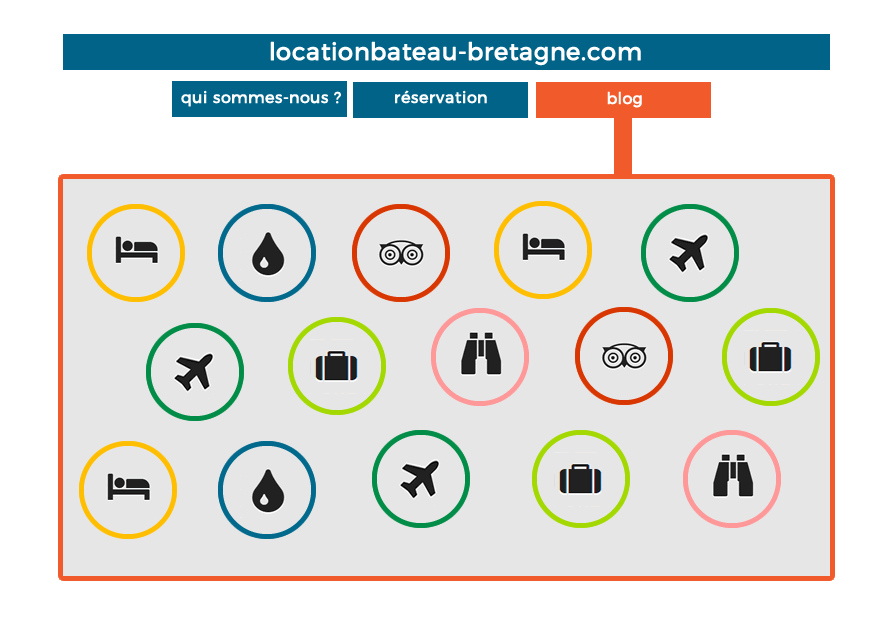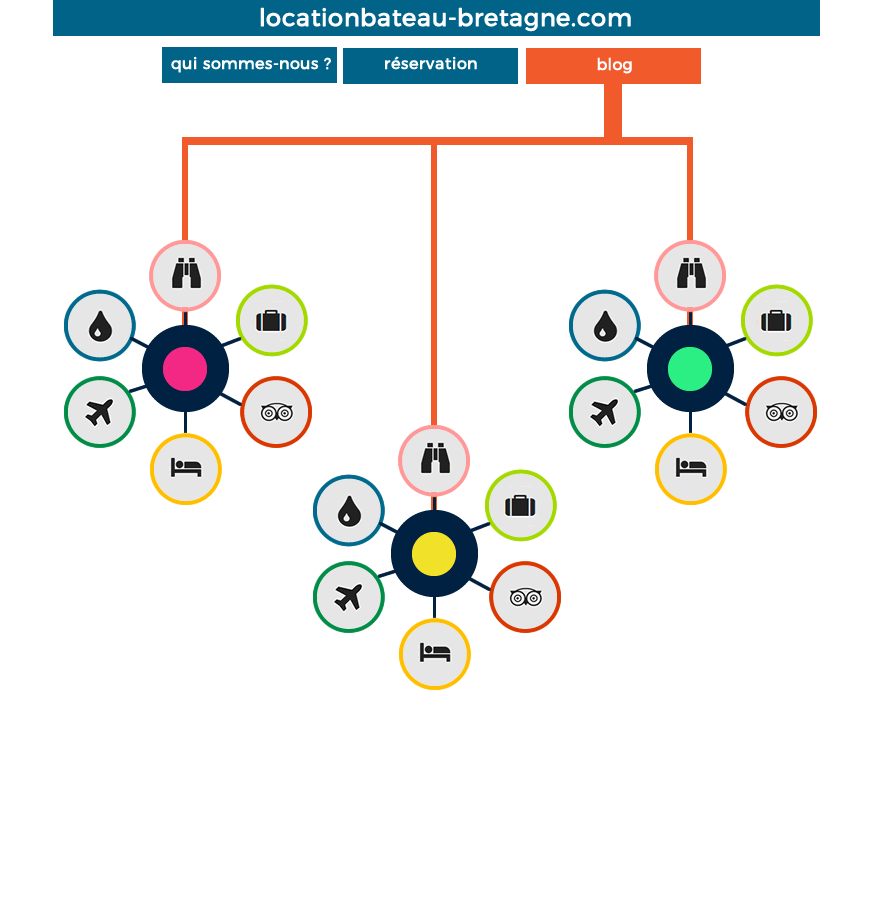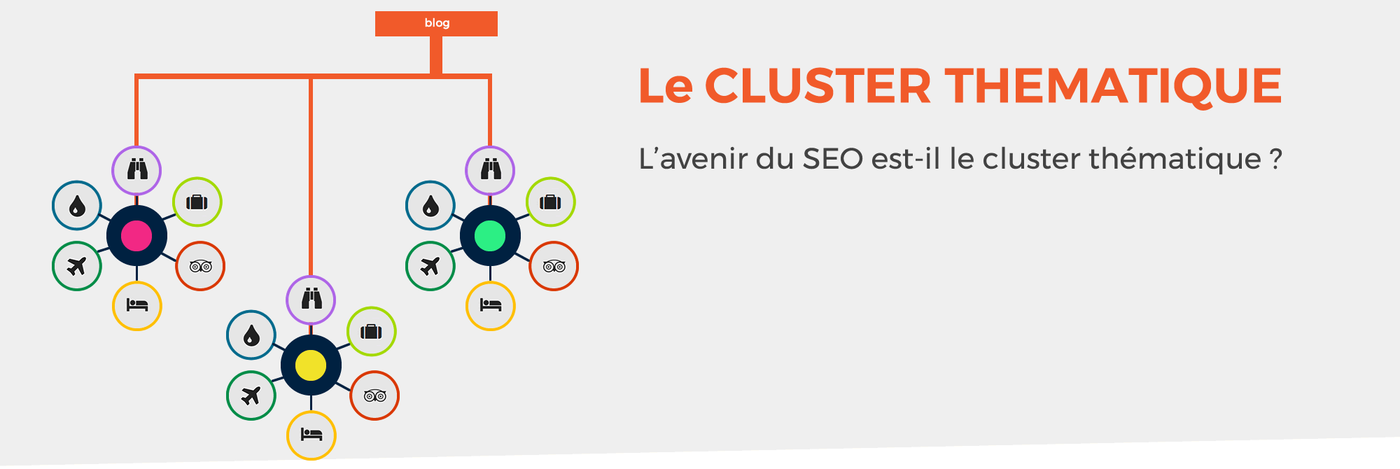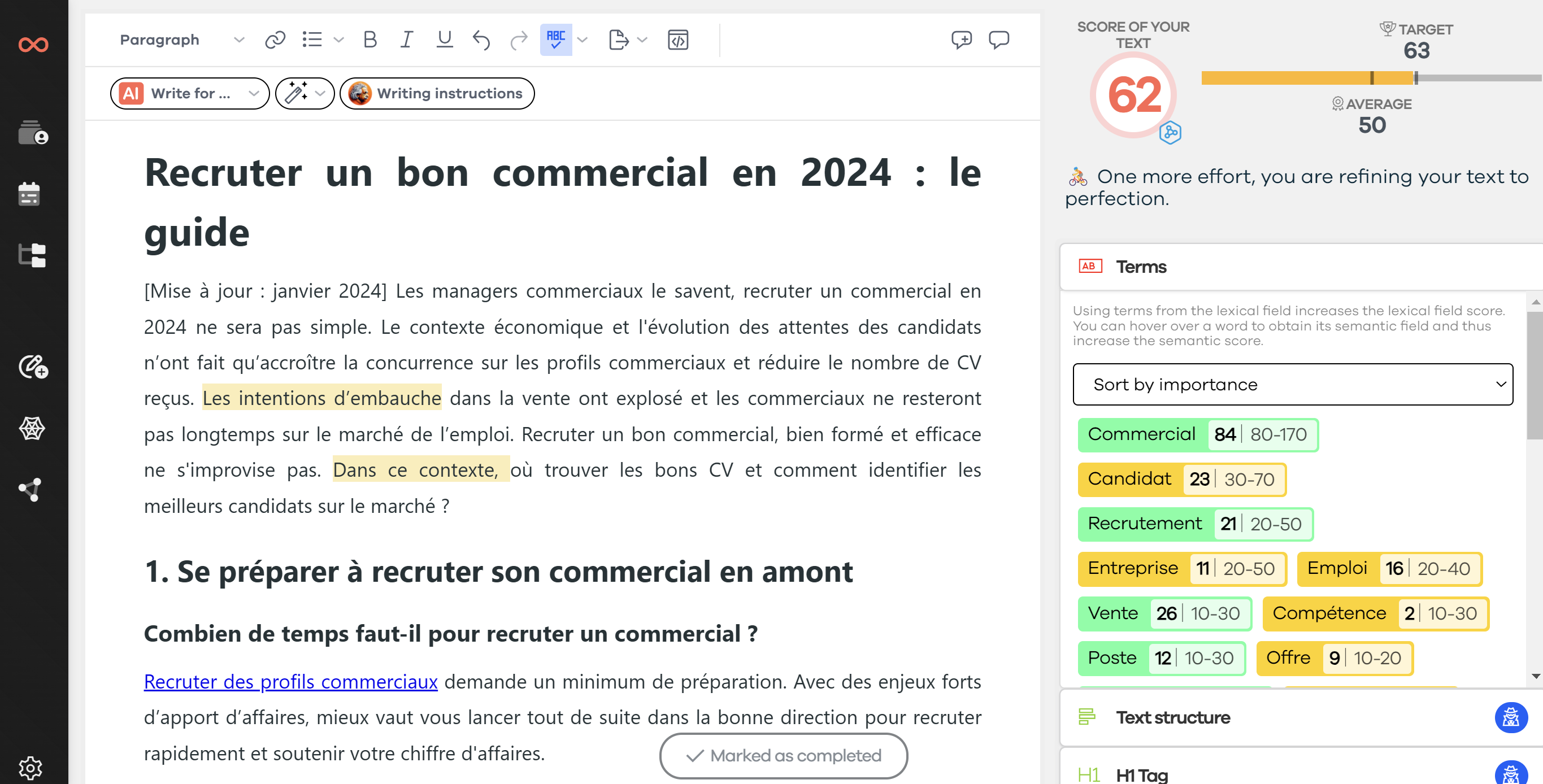This post is an introduction to a new SEO concept that I use daily. In practice, this process is simple to implement and is remarkably effective.
With the arrival of Google updates, what are the effective website architectures? Like the topic cluster or siloing, there are other methods of content structures, notably one of them very popular across the Atlantic: keyword clustering.
Content creation, a winning SEO content strategy
Since its creation, SEO and content marketing have revolved around one thing: creating as much content as possible on strategic and relevant keywords of a theme. The goal is to cannibalize the top spots on search engine results pages. After all, as SEO consultants often say, content is king, and the more you produce, the more you increase the potential for a qualified user to find you.
Needless to say, this strategy has worked and continues to work. In fact, this rapid content creation strategy has worked so well that everyone seems to be using it.
With all this content produced, it becomes increasingly difficult to stand out from others and be visible. Worse yet, many content marketing experts believe we are approaching the "content shock". Content shock is the point at which we produce more than we consume content.
Finally, while the amount of content on the web has significantly increased, the quality of content has not necessarily kept pace. Much of the content simply rephrases information from other sites, there is no creation and popularization of new concepts. This means that the user reads what they already knew, giving them no reason to return to your site.
How does Google adapt?
Thanks to constant algorithm adjustments, Google has become, in 20 years, an excellent tool for searching for information amid huge amounts of content.
With so many documents from various sources, Google's biggest effort is to ensure that only the best and most relevant content reaches the top position of the search engine. Many Google penalties have so far focused on bad practices: keyword stuffing, content spinning, hidden content...
However, Google has evolved dramatically in recent years. Today, results are no longer focused on the keywords of a page but on the topics. Gone are the days when Google breaks down a search query based on keywords and tries to find pages filled with the same term. Instead, Google considers the entire query as a coherent set, using deep learning to interpret it quickly and accurately.
Two major updates are responsible for this:
- In 2013, the Hummingbird update, which analyzes the surrounding context of a keyword rather than specific keywords
- In 2015, Google RankBrain update, which integrates machine learning artificial intelligence that associates keywords with similar themes but also takes into account the context of the search (Google Rankbrain definition)
What are the consequences? For users, this means that when you perform a search on a given topic, the results you get will be more relevant, regardless of the keywords you used to get there. Even if you don't know exactly what you're looking for, Google is smart enough to understand your intent using the context of your query.
What does this mean for SEO and content marketing?
While search engines and user behavior are constantly evolving, content marketing remains largely stagnant. Most content is still based on a keyword-centered methodology that is now obsolete.
To survive in the post-Rankbrain world, it's not enough to create blogs and create pages for keywords: you need to optimize your content both for the search engine and for the visitors you are trying to attract. If you want to stand out from the competition, you need to break away from the obsolete keyword-focused model and adapt to the topic-centered model.
What is Keyword Clustering?
But how to do it? Content marketing specialists have found a solution in the concept of content pillars, also known as Topic Cluster (keyword clustering).
Straight from the United States, this concept was defined by the company HubSpot (specialized in Inbound marketing). The optimization strategy of the Keyword Clustering for search engines is based on topics rather than keywords. The topic is at the center of the contents. Basically, this keyword clustering model offers web copywriters a relevant and effective content creation, organization, and promotion strategy better suited to information search for website visitors.
By associating pillar pages hosted on blogs and web pages, keyword clustering allows companies to create a centralized content bank that explores all facets of a general topic by dividing it into autonomous segments.
Why does Keyword Clustering beat the traditional structure?
To fully understand the strength of the model, it is important to first understand the traditional blog structure it aims to replace. Until recently, the blog architecture of most sites looks like this:

In this anarchic configuration, each circle represents a blog post designed to rank a specific keyword and each symbol (plane, suitcase...) represents the general topic to which this post belongs (booking, what to visit, navigation condition, where to stay...). While blog posts deal with specific keywords and sub-themes, the blog as a whole has no general theme or thematic organization.
As you can see, the end result is a blog that is not lacking in content, but that does not follow any clear organizational pattern, making it difficult for a visitor to find the specific information they are looking for. Worse yet, all blog posts that share similar keywords end up competing with each other for search engines, jeopardizing your natural SEO work.
The Keyword Clustering is specifically designed to take into account two factors:
- Respond to increasingly conversational queries (searches via virtual assistant Google Home, Siri...)
- Make information accessible and organized to increase their effectiveness (for the user and the search engine)
Let's see how content could be organized on a site using keyword clusters:

Where the traditional blog is a structural mess, the keyword cluster is specifically designed to help marketers and SEOs create and promote content as humans conceive it. Search engines like Google are getting closer to human behavior thanks to artificial intelligence, they are now able to understand a concept via a topic and not by keyword. Let's not forget that what Google wants is to give the most qualitative information to the user.
While optimization for natural SEO is a plus, the real potential of this type of website structure is much greater: namely, the possibility of becoming an expert resource that your readers always come back to consult.
I will explain in more detail in next week's post, the implementation of this system.
What is a good Keyword Cluster?
Now that we have seen what a Keyword Cluster is, it's time to detail this SEO technique a little more in detail.
Content pillar, cluster content, and links... So many terms that you will need to know to set up your keyword cluster optimally. Each step is crucial and connected to the others.
We will detail each component of this SEO technique at the service of content marketing. The keyword cluster has three main elements that I present as follows:
The content pillar
The centerpiece of the content strategy is the content pillar. This is a long-form landing page that integrates various types of media to cover the entirety of the theme and answer your readers' most important questions. The pillar page is named as such because it must serve as the central pillar of your content strategy.
Although it serves a conversion purpose similar to landing pages that offer to download an ebook, a white paper, a form... The pillar page is not truncated so that search engines can crawl and view it in its entirety (without having to fill out any form).
The cluster content
The cluster content supports your pillar page. These contents surround and reinforce your pillar page. While your pillar page should give readers an overview of a theme, the cluster content is supposed to do the exact opposite: go into detail on a topic of the theme. From an SEO point of view, you need to take one of the long-tail keywords that relate to the main topic and develop it as much as possible.
Each pillar article you create must be supported by 5 to 15 cluster contents. If you run out of ideas, consider reusing existing content that you will use as cluster content: refactor J
The links
Hyperlinks are the binder, the glue that binds your keyword cluster. All the content of your cluster must contain hyperlinks to the pillar page that serve as a path for conversion for your visitors but also indicate to Google that your pillar is "supported" by a set of related topics.

Summary of the different components of a cluster
What is a good Keyword Cluster?
It is complete and unique
Answer one and only one theme. Cover the theme enough to answer all the questions your audience may have while introducing new information that your readership would not have considered.
It is constantly evolving
Regularly update your content, especially after sector developments, to ensure the relevance of the cluster to the reader and improve its validity and natural SEO in the eyes of search engines.
It is segmented
Divide the content into groups of related topics with clearly defined sections and appropriate titles so that readers can easily navigate your keyword cluster. Each content should consider the maturity level of your readership in relation to your service or product.
It is optimized
Integrate all relevant keywords, as well as synonyms and associated terms (help yourself with the semantic seo tool of seoquantum), to maximize the visibility of your content.
Now that we know the basic elements of the keyword cluster model, let's delve into the different components that make it work, starting with the most important: the pillar page. See you in a future post on the operation of the pillar page of the Keyword Cluster. From now on, take action by segmenting the different clusters that will make up your website.
How will the keyword cluster tool help you?
In SEO, it is important to identify and respond to the user's intent. To do this, you will need to organize the structure of your site in a way that best meets the expectations of search engines. This SEO tool will allow you to group your keywords in a relevant way. Discover how SEOQuantum can help you set up your keyword cluster.
Find ideas for your website's pillar pages
Now that we have defined what a keyword cluster is and its different elements, it's time to get down to business. How to put into practice what we have just learned and find ideas for your pillar pages? I have illustrated this process with several examples of Topic Cluster to help you put this SEO technique into practice.
Need to go further?
If you need to delve deeper into the topic, the editorial team recommends the following 5 contents:

